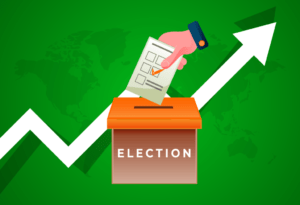An Unfolding Economic Opportunity
As global trade experiences turbulence amid rising protectionism, the India-UAE relationship emerges as a beacon of opportunity. The resurgence of tariff-driven policies, especially under the potential return of Donald Trump to the U.S. presidency, threatens to realign global trade dynamics. In this context, India and the United Arab Emirates (UAE), both fast-growing economies with shared strategic goals, are uniquely positioned to mitigate external risks and amplify bilateral cooperation across trade, technology, energy, and innovation.
This strategic partnership has evolved well beyond oil. From $180 million in bilateral trade in the 1970s to over $84.5 billion in FY2023 (Statista), the depth and diversity of India-UAE trade underscore the scale of mutual trust and economic alignment.
India-UAE Economic Ties History
Established in 1972, the India-UAE diplomatic relationship has become one of India’s most significant strategic and economic alliances. The UAE is now India’s third-largest trading partner and second-largest export destination, surpassing traditional trade destinations like the EU and Southeast Asia.
The Comprehensive Economic Partnership Agreement (CEPA) launch in May 2022 marked a key inflection point. This landmark deal aims to boost trade to $100 billion within five years, offering Indian exporters duty-free access to over 90% of UAE tariff lines, particularly in high-growth sectors like textiles, pharmaceuticals, gems and jewelry, and food products (Ministry of Commerce).
Crucially, the UAE’s investments in India go beyond trade. The Abu Dhabi Investment Authority (ADIA) and Mubadala have invested significantly in India’s digital infrastructure (e.g., Reliance Jio), renewable energy (e.g., ReNew Power), and logistics.
Why Now Is the Right Time
1. U.S. Tariffs Creating a Global Reset
Speaking recently at the World Governments Summit in Dubai, UAE Parliamentarian Dr. Ali Rashid Al Nuaimi stated that the ongoing U.S. tariff regime could become a “golden opportunity” for India and the UAE to expand bilateral trade and insulate against global disruptions (ANI News).
If Trump returns to the White House and revives steep tariffs—especially against China and possibly the EU—it may open new trade corridors. With its sophisticated logistics infrastructure (like Jebel Ali Port), the UAE can be a vital transit hub for Indian goods heading to Africa and Europe.
2. Converging Economic Visions
Both nations are navigating economic transitions:
- India aims for a $5 trillion GDP by FY2027, driven by Make in India, Digital India, and Production Linked Incentive (PLI) schemes.
- UAE is implementing Vision 2030, focusing on diversifying its economy away from hydrocarbons toward technology, tourism, and green energy.
This shared pivot creates synergy in sectors like EVs, green hydrogen, fintech, logistics, and space technology.
Economic Benefits of Strengthening Ties
| Benefit | India | UAE |
| Export Market Diversification | Reduced Western reliance | Access to India’s consumer and industrial markets |
| Investment Flow | FDI from UAE in infrastructure, energy, and tech | Stakes in India’s unicorn/start-up ecosystem |
| Labour & Remittances | $18 billion in remittances from the UAE annually | Skilled labor and knowledge workforce from India |
| Logistics & Trade Access | Entry point to Africa via UAE ports | Gateway to South Asia via India |
The CEPA Impact So Far
According to a report in The Economic Times, exports under CEPA rose by 11% in 2023, with notable performance in sectors like gems & jewelry, pharma, and textiles. The agreement also introduced:
- Digital customs clearance to reduce processing time.
- Preferential access for UAE companies is available in Indian government contracts.
- Facilitated business visa approvals and joint innovation funds
Both governments are now discussing 2 CEPAs, which may cover e-commerce, digital trade, and fintech regulation alignment (Republic World).
Challenges and Risks Ahead
1. Geopolitical Instability
UAE’s proximity to regional conflicts (Iran, Yemen) and India’s balancing of ties with the West, Russia, and the Middle East could create diplomatic friction.
2. Currency Volatility
Over 85% of trade settlements are in USD, increasing forex risk. The push to allow INR-AED transactions needs institutional backing and central bank cooperation.
3. Regulatory and Data Challenges
While CEPA reduces tariffs, non-tariff barriers and lack of regulatory alignment in areas like data localization, digital identity, and cybersecurity remain.
4. Global Economic Headwinds
A synchronized global slowdown or new wave of inflation could pressure domestic consumption in both countries, slowing trade momentum.
5. Protectionist Drift Elsewhere
If the global economic slowdown accelerates, protectionist policies in other markets could spill over, affecting India-UAE trade routes indirectly.
Strategic Next Steps
1. Promote INR-AED Trade Mechanisms
This will hedge against USD volatility, reduce transaction costs, and foster financial sovereignty.
2. Institutionalize Sectoral Councils
Task forces on green energy, AI, healthtech, and quantum computing can create joint R&D and venture funding platforms.
3. Joint Ventures in Africa
India’s pharma and agri-tech, combined with UAE’s capital and logistics, can unlock African markets worth over $600 billion by 2030 (AfDB).
4. Expand Cultural and Tech Diplomacy
India can leverage its large diaspora (3.5 million in UAE) to push soft power and tech exports in digital education, skilling, and digital public infrastructure.
Conclusion: Seizing the Strategic Moment
The India-UAE partnership is no longer transactional — it’s transformational. With CEPA acting as a springboard and global trade realigning amid protectionism, both nations have a rare chance to shape a new economic architecture for the Global South.
As Dr. Al Nuaimi rightly noted, “this is the right time for both nations to invest in each other” (The Week). By acting with urgency and vision, India and the UAE can redefine bilateral success and global economic leadership in an era of uncertainty.
Related Posts
Disclaimer Note: The securities quoted, if any, are for illustration only and are not recommendatory. This article is for education purposes only and shall not be considered as a recommendation or investment advice by Equentis – Research & Ranking. We will not be liable for any losses that may occur. Investments in the securities market are subject to market risks. Read all the related documents carefully before investing. Registration granted by SEBI, membership of BASL & the certification from NISM in no way guarantee the performance of the intermediary or provide any assurance of returns to investors.
How useful was this post?
Click on a star to rate it!
Average rating 0 / 5. Vote count: 0
No votes so far! Be the first to rate this post.
waitfor delay '0:0:5'--
I’m Archana R. Chettiar, an experienced content creator with
an affinity for writing on personal finance and other financial content. I
love to write on equity investing, retirement, managing money, and more.
 Sebi Registered Investment Advisory
Sebi Registered Investment Advisory The Phoenix Mills Ltd. (PDF)
The Phoenix Mills Ltd. (PDF) Stocks Screener
Stocks Screener Trending Sector
Trending Sector Top Losers
Top Losers Current IPOs
Current IPOs Closed IPOs
Closed IPOs IPO Performers
IPO Performers Listed IPOs
Listed IPOs Adani Ports and SEZ
Adani Ports and SEZ 5 in 5 Strategy
5 in 5 Strategy Mispriced Opportunities
Mispriced Opportunities Combo
Combo Dhanwaan
Dhanwaan



















